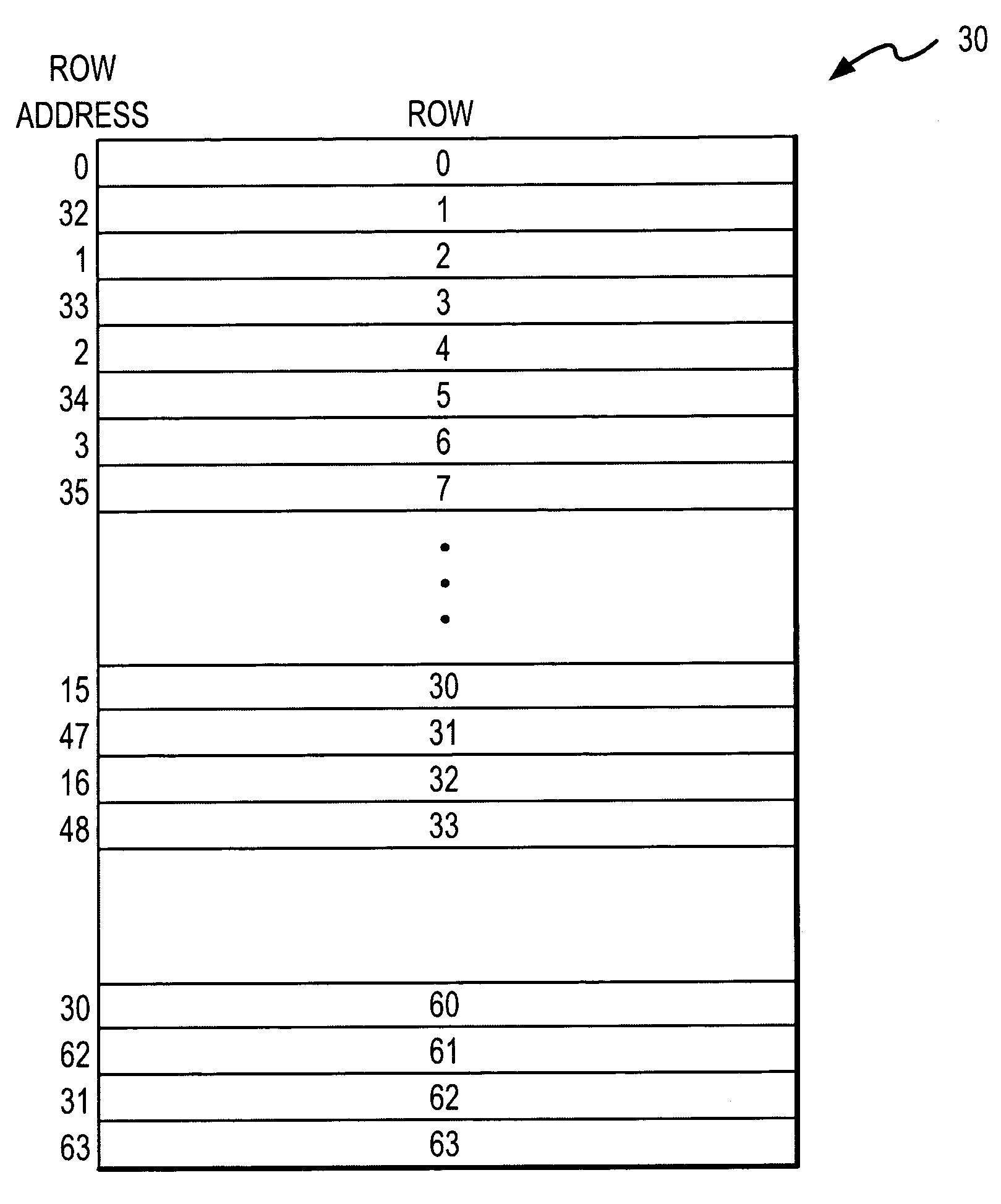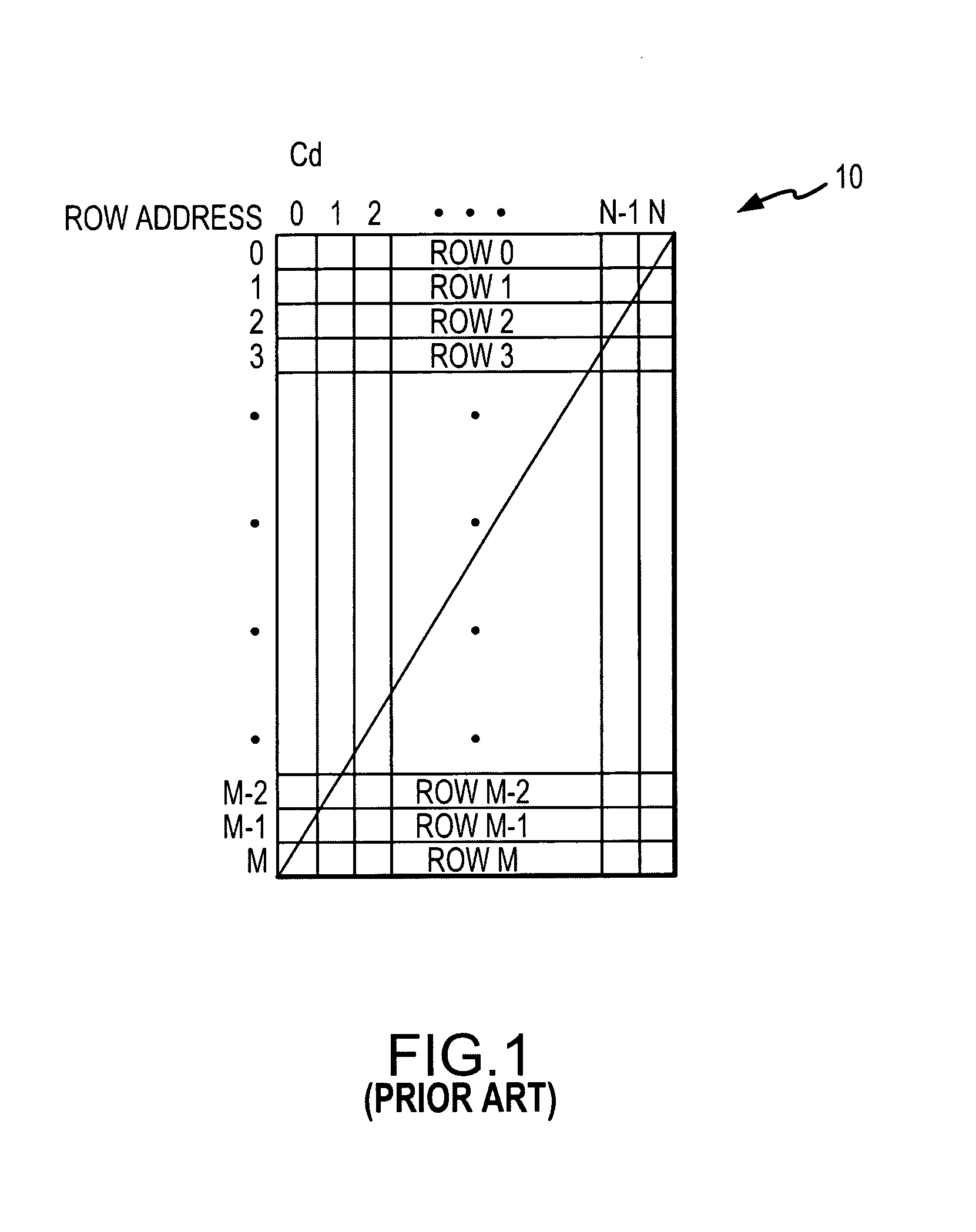Method and system for low power refresh of dynamic random access memories
a random access memory and low power refresh technology, applied in static storage, information storage, digital storage, etc., can solve the problems of limited battery life, large power consumption, and limited use of portable electronic devices such as notebook computers, and achieve the effect of reducing the refresh rate and facilitating and quick switching
- Summary
- Abstract
- Description
- Claims
- Application Information
AI Technical Summary
Benefits of technology
Problems solved by technology
Method used
Image
Examples
Embodiment Construction
[0026]A memory map 10 for a conventional DRAM device (not shown) is shown in FIG. 1. The memory map 10 illustrates how the physical locations in an array of memory cells (not shown) in the DRAM device correspond to row and column addresses that may be applied to the DRAM device. The row and column addresses are normally binary numbers that are decoded by the DRAM to select the corresponding row or column. It is assumed for purposes of illustration that the array of memory cells that will be discussed with reference to FIG. 1 consists of M+1 rows and N+1 columns. The memory cell that is in the upper left hand corner is selected by a row address of 0 and a column address of 0. The memory cell in the upper right hand corner is selected by a row address of 0 and a column address of N. The memory cell in the lower left hand corner is selected by a row address of M and a column address of 0. The memory cell in the lower right hand corner is selected by a row address of M and a column addr...
PUM
 Login to View More
Login to View More Abstract
Description
Claims
Application Information
 Login to View More
Login to View More - R&D
- Intellectual Property
- Life Sciences
- Materials
- Tech Scout
- Unparalleled Data Quality
- Higher Quality Content
- 60% Fewer Hallucinations
Browse by: Latest US Patents, China's latest patents, Technical Efficacy Thesaurus, Application Domain, Technology Topic, Popular Technical Reports.
© 2025 PatSnap. All rights reserved.Legal|Privacy policy|Modern Slavery Act Transparency Statement|Sitemap|About US| Contact US: help@patsnap.com



